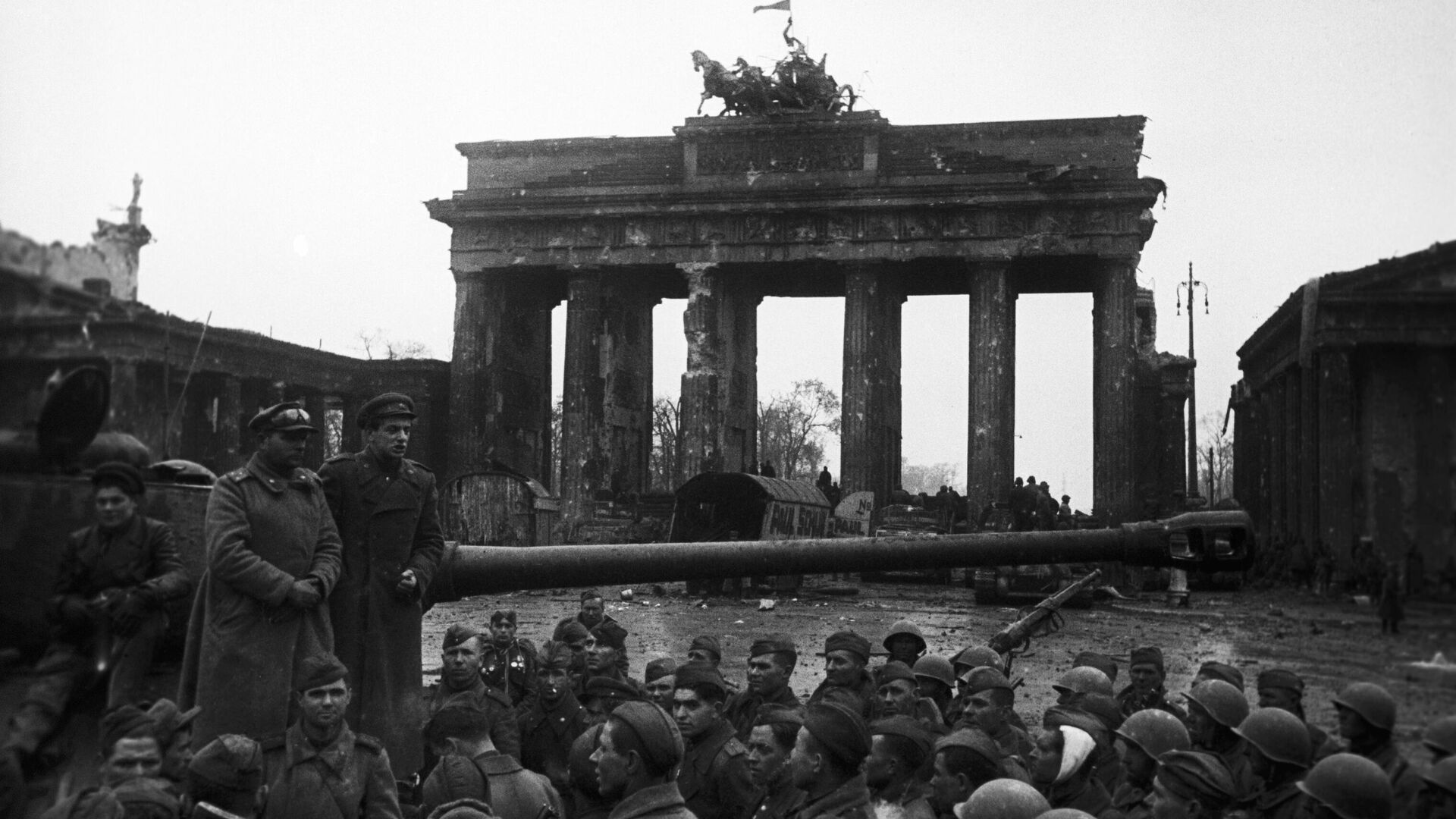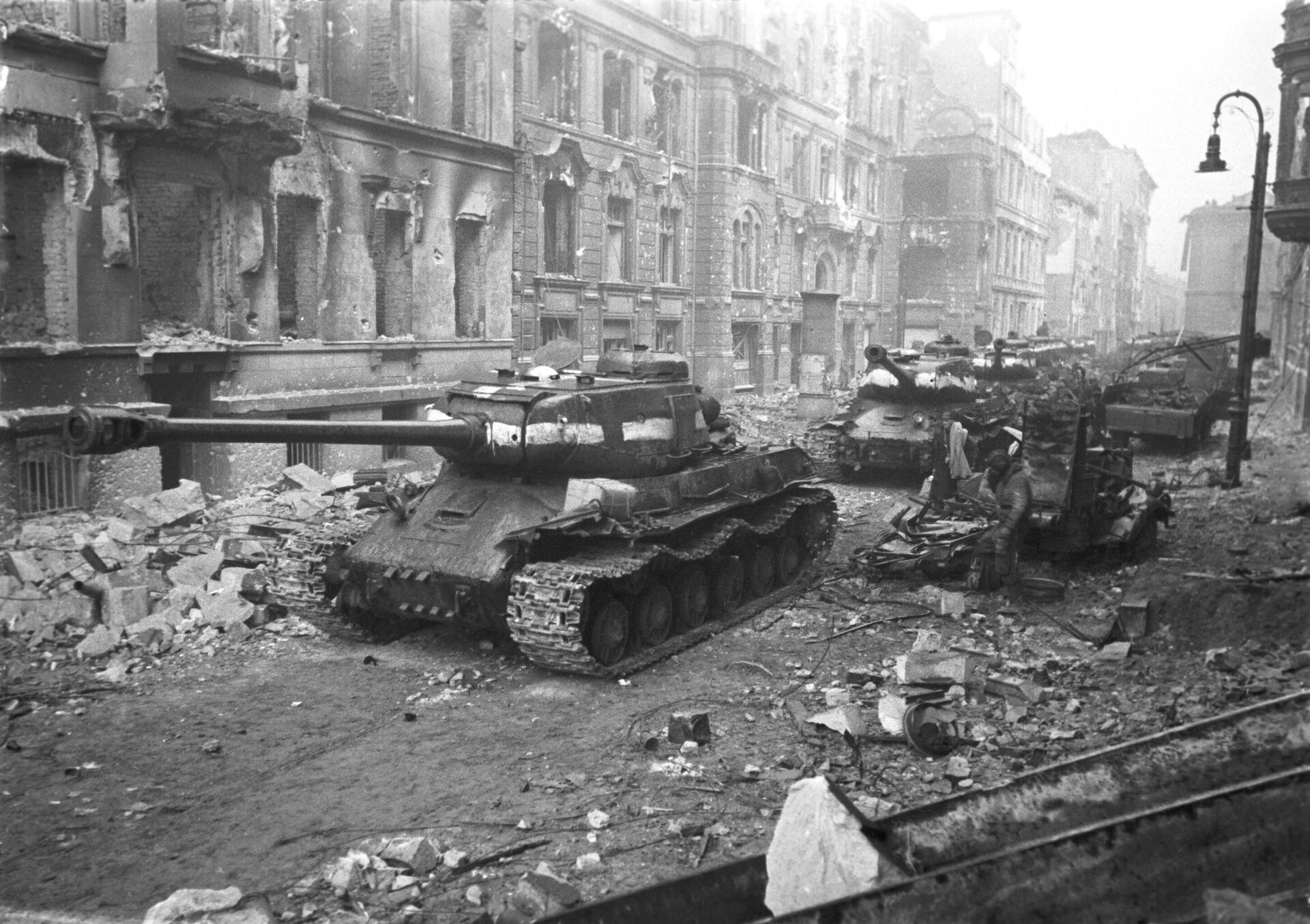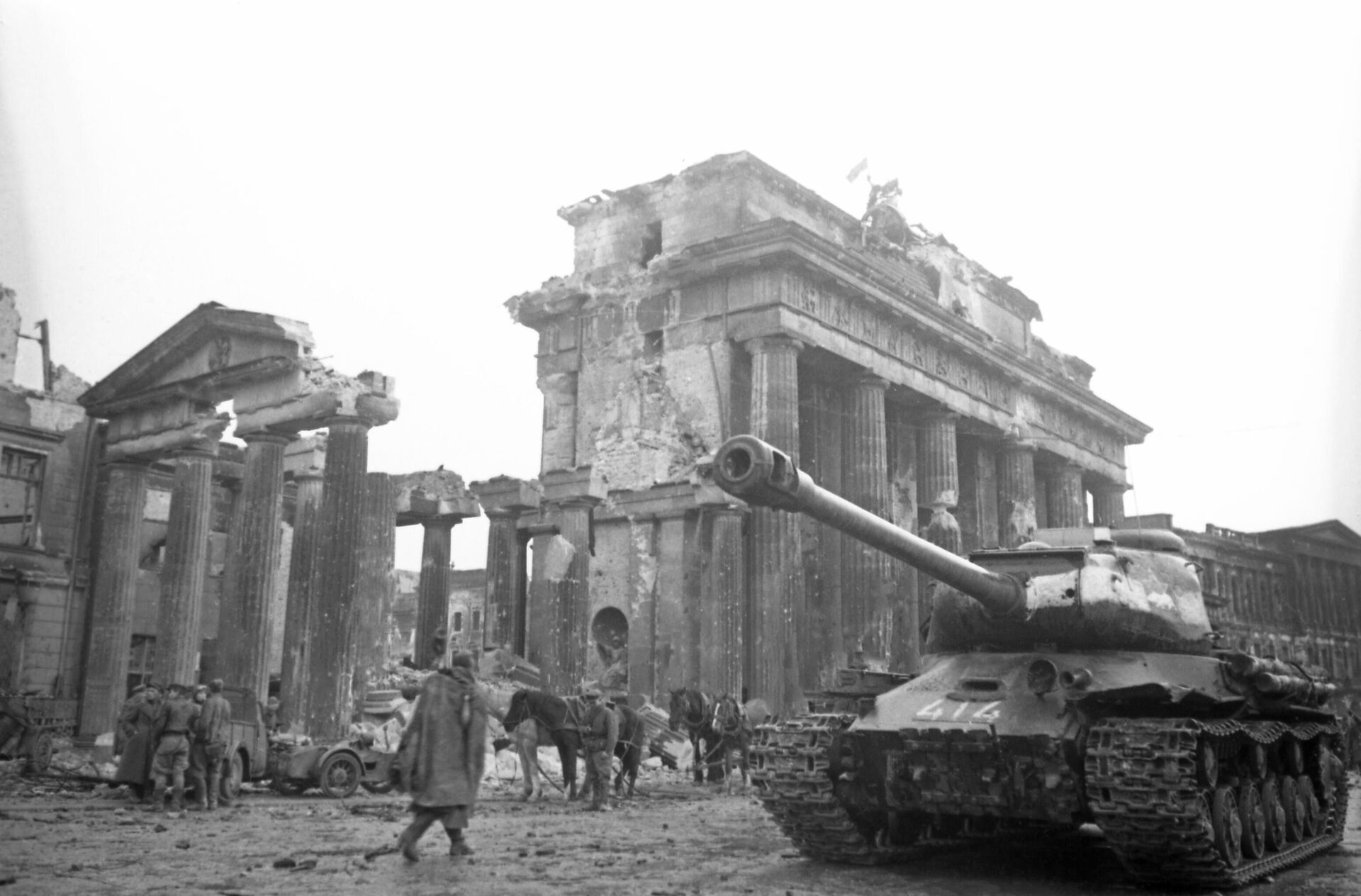May 2: The Day the Third Reich's Capital Fell to the Soviet Red Army
13:42 GMT 02.05.2023 (Updated: 14:13 GMT 02.05.2023)

© Sputnik / Evgeny Khaldei
Subscribe
On May 2, 1945 forces of the Soviet Red Army crushed the resistance of the Nazi German forces defending Berlin, striking a blow at the very heart of the Third Reich and putting an end to Adolf Hitler’s dreams of conquest and genocide.
By the time Soviet forces reached the outskirts of Berlin in April 1945, the fate of the Nazi Germany was all but sealed: running low on resources and manpower, the Nazis could only try to delay their inevitable demise while the Red Army, well-equipped and highly motivated, was eager to deliver the killing blow to Hitler's empire.
Despite that, Hitler – delusional to the last – ordered the Nazi troops to defend Berlin, even as his commanders resorted to drafting children and the elderly to fill the ranks.
While Germans managed to rally tens of thousands of combatants to try and stop the Soviet advance, they had no chances against over two million Red Army troops who were bolstered by about 6,000 tanks and self-propelled guns, 8,000 warplanes and some 41,000 mortars and artillery pieces.

Soviet tanks on the outskirts of Berlin. April 26, 1945
© Sputnik / Vladimir Grebnev
The Soviet offensive on Berlin started on April 23, 1945 when forces of the Red Army’s 1st Belorussian Front, 2nd Belorussian Front and 1st Ukrainian Front descended upon the German capital and proceeded to systematically obliterate its defenses.

The fighting at the Reichstag building during the Battle for Berlin. April 30, 1945.
© Sputnik / Ivan Shagin
The German forces entrenched in Berlin mounted a fierce resistance but it was ultimately for naught – by April 29, the Soviet forces cut their way through the German ranks, reaching to the very heart of the Third Reich’s capital. They proceeded by attacking the Reichstag building, to hoist the famous Victory Banner on the structure’s roof on May 1.
The next day, on May 2, what was left of the city’s garrison surrendered to the Soviets.

Soviet tanks in the streets of Berlin. April 30, 1945
© Sputnik / Vladimir Grebnev
By that time, Adolf Hitler and some of the high-ranking members of the Nazi leadership had already opted to commit suicide rather than face reprisal for their crimes against humanity.

Soviet red banner raised over the Brandenburg Gate in Berlin. May 2, 1945
© Sputnik / Vladimir Grebnev
While some Nazi forces continued fighting even after their capital had fallen to the Red Army, it did not last – less than a week after Berlin surrendered, the Nazi leadership signed an unconditional surrender.

